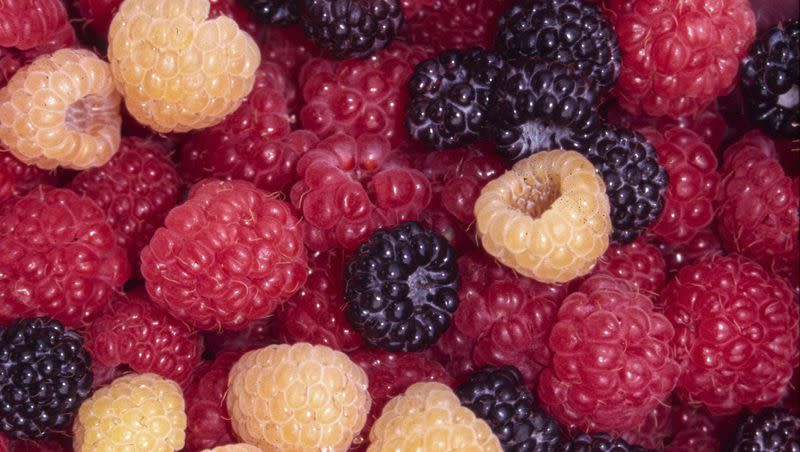Benefits of fiber: Foods rich with fiber to increase your daily intake

Fiber is vital to a balanced diet. It boasts health benefits such as helping control blood sugar levels and maintaining bowel health. But most U.S. adults don’t eat enough of it.
“Dietary fiber is an essential part of a healthful diet. It is crucial for keeping the gut healthy and reducing the risk of chronic health conditions,” writes Medical News Today.
“Most people in the United States do not get enough fiber from their diets. According to some estimates, only 5% of the population meet the adequate intake recommendations.”
This means most adults in the U.S. could benefit from increasing their daily fiber intake.
There are two types of fiber: soluble and insoluble fibers. Both are good for us. Soluble fiber can dissolve in water and helps to regulate blood sugar levels and lower risk of heart disease. Insoluble fiber regulates bowel movements, prevents constipation and assists in removing waste from the body, reports Harvard Health.
Some other benefits from fiber include: helping lower cholesterol levels, aids in achieving a healthy weight and reduced risk of colorectal cancer, per Healthline. It can even help you live longer!
An analysis of nearly 250 studies found that individuals who ate the most fiber decreased their risk of dying from stroke, type 2 diabetes, cardiac disease or colon cancer by 16% to 24%, compared to those who ate less fiber.
How much fiber should I get every day?
American adults eat an average of 10 to 15 grams of fiber daily, which is about half the recommended, per Harvard Health. Adult women should aim to eat at least 21 to 25 grams of fiber a day, and adult men should aim for 30 to 38 grams a day, reports the Mayo Clinic.
Consuming fiber at the recommend levels is simple when you understand which foods are fiber-packed. Several of them are foods you probably typically keep in your pantry, like black beans and popcorn.
Let’s take a look at foods rich in fiber.
1. Fruits and berries
Several fruits and berries are packed with fiber and can easily boost your daily fiber intake. Here are fruits and berries with lots of fiber per serving, according to the USDA and the Mayo Clinic.
Raspberries (8 grams of fiber per cup).
Pear (5.5 grams of fiber per medium pear).
Apple (4.5 grams of fiber per medium apple).
Mango (5 grams of fiber per medium mango).
Blackberries (8 grams of fiber per cup).
2. Vegetables
Vegetables are a great source of daily fiber. Here are some fiber rich vegetables, according to the USDA and the Mayo Clinic.
Broccoli (3.9 grams per stalk).
Green peas (7 grams per cup).
Brussel Sprouts (4 grams per cup).
Sweet Potato (4 grams per medium potato).
Artichokes (7 grams per medium artichoke).
3. Grains
Lots of grains are filled with fiber, work these into your diet to increase your daily intake. Here are some fiber rich grains, according to the Mayo Clinic.
Quinoa (5 grams per cup).
Bran (14 grams per cup).
Oatmeal (4 grams per cup).
Popcorn (3.5 grams per 3 cups).
Whole-wheat bread (2 grams per slice).
4. Legumes, nuts and seeds
Legumes, nuts and seeds might have the most fiber of all! Here are some fiber rich legumes, nuts and seeds, according to the Mayo Clinic.
Lentils (15.5 grams per cup).
Black Beans (15 grams per cup).
Chia Seeds (10 grams per ounce).
Almonds (3.5 grams per ounce).
Split Peas (16 grams per cup).

